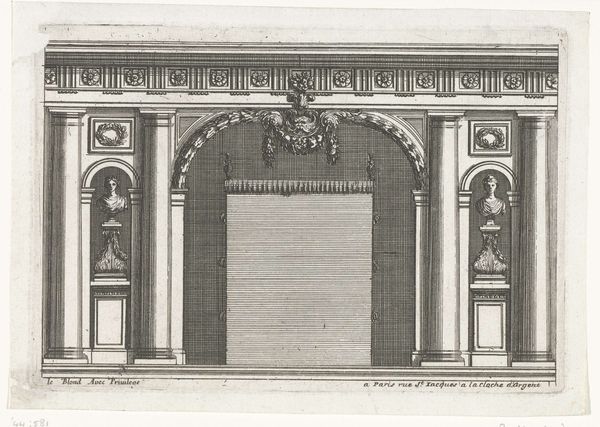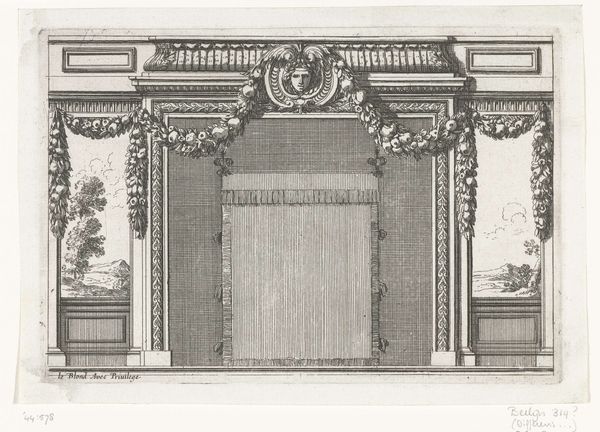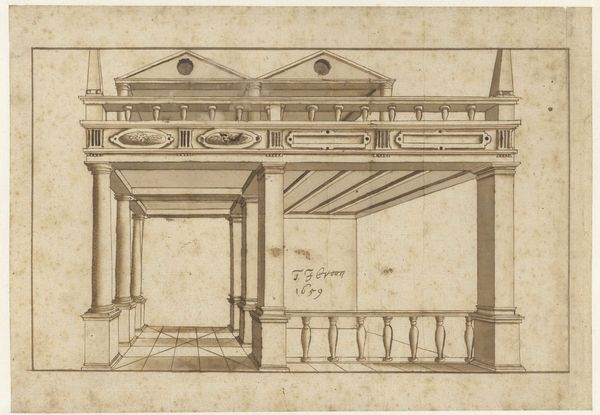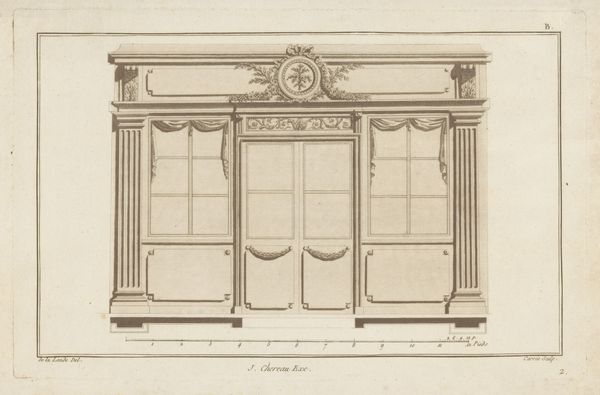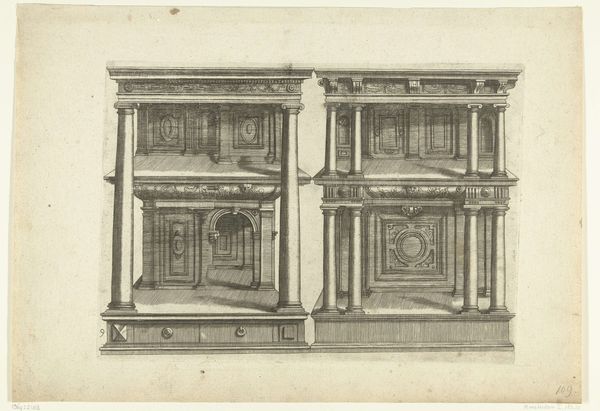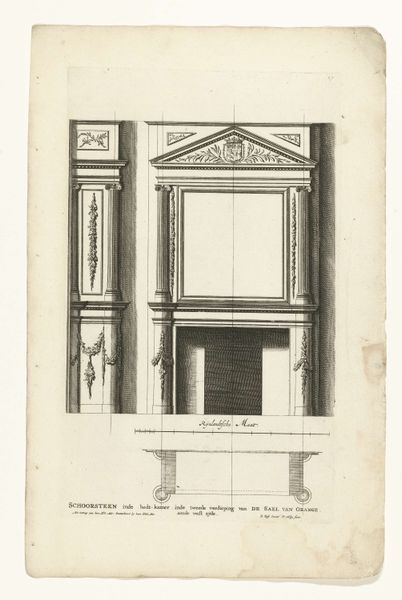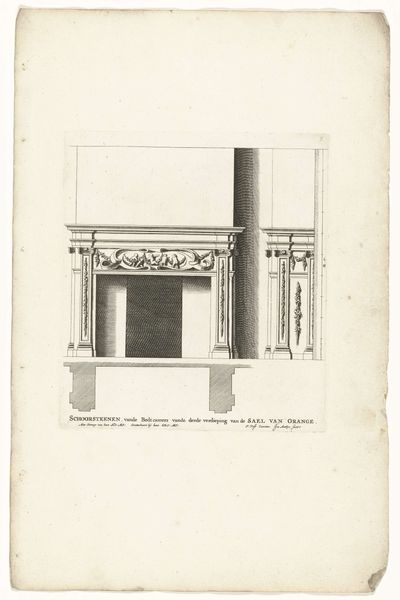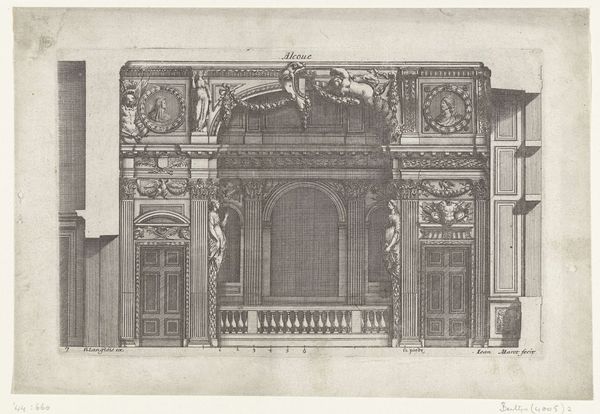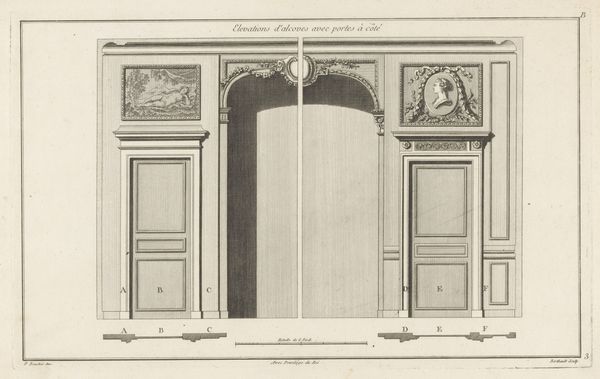
drawing, print, engraving, architecture
#
drawing
#
baroque
# print
#
form
#
line
#
cityscape
#
engraving
#
architecture
Dimensions: height 137 mm, width 197 mm
Copyright: Rijks Museum: Open Domain
Curator: Welcome! Let's consider "Alkoof afgesloten door balustrade," a print dating back to around 1650 by Jean Lepautre currently held here at the Rijksmuseum. Lepautre was working in engraving to portray Architecture with baroque stylings, so it is all line, form, cityscapes and details of alcoves with balustrades. Editor: It's striking how staged it feels, almost like a theatrical backdrop, and its cold monochrome palette gives the impression of solitude despite its opulence. Curator: Absolutely, it seems that Lepautre has focused on interior design within the Baroque period in Europe. How did these kinds of designs affect people within a period of wars, uprisings, disease and change? This also forces me to contemplate on the act of creation here; consider how an engraver during this time has meticulously transferred a designed idea to a metal plate through labor-intensive skills. These objects could be mass produced within early industry; these designs also suggest that an artisan's labor may reflect the tastes and preferences of patrons during the 17th century. Editor: The image does not convey any inhabitants to speak of. The figure is more representative than embodied as it is presented here. It begs the question: who might occupy this alcove and what purpose might this space have served in the realities of Baroque society? Considering this could be placed in proximity to many things that create discomfort and oppression. It feels as if the only people afforded such leisure at that time may include royalty and other positions of aristocracy. What could all that money and power represent for their society at the time? Curator: I think these prints also allow us to observe how architectural styles transcend mere functionality, influencing class structures through artistic representation and cultural significance. This connects directly with accessibility. Printed images, unlike singular architecture, enabled the spread of designs and styles to a wider audience—democratizing aesthetic ideas across Europe, to an extent. Editor: I concur, looking at Lepautre's technique provides an alternative view through material realities and historical factors and to question architecture that upholds identity, class, gender and politics, where aesthetics, cultural dissemination and society come together, it creates awareness of the complex systems within Europe. Curator: In conclusion, we've found within this "Alkoof afgesloten door balustrade," the interplay of process and cultural stories held within materials. Editor: Hopefully that enables one to consider this print and discover social norms, labor and hierarchy. Thank you for taking time to explore it with us.
Comments
No comments
Be the first to comment and join the conversation on the ultimate creative platform.
